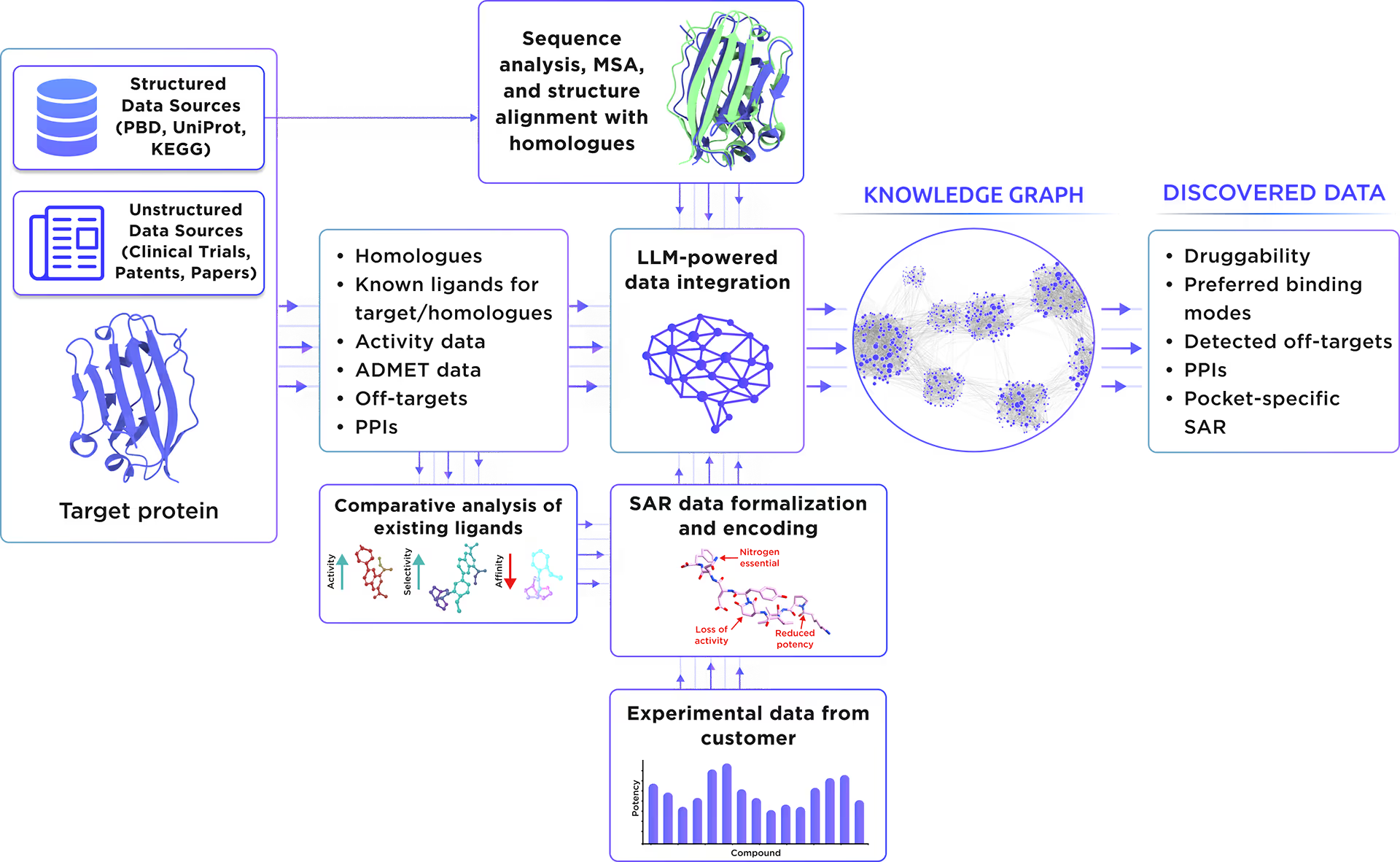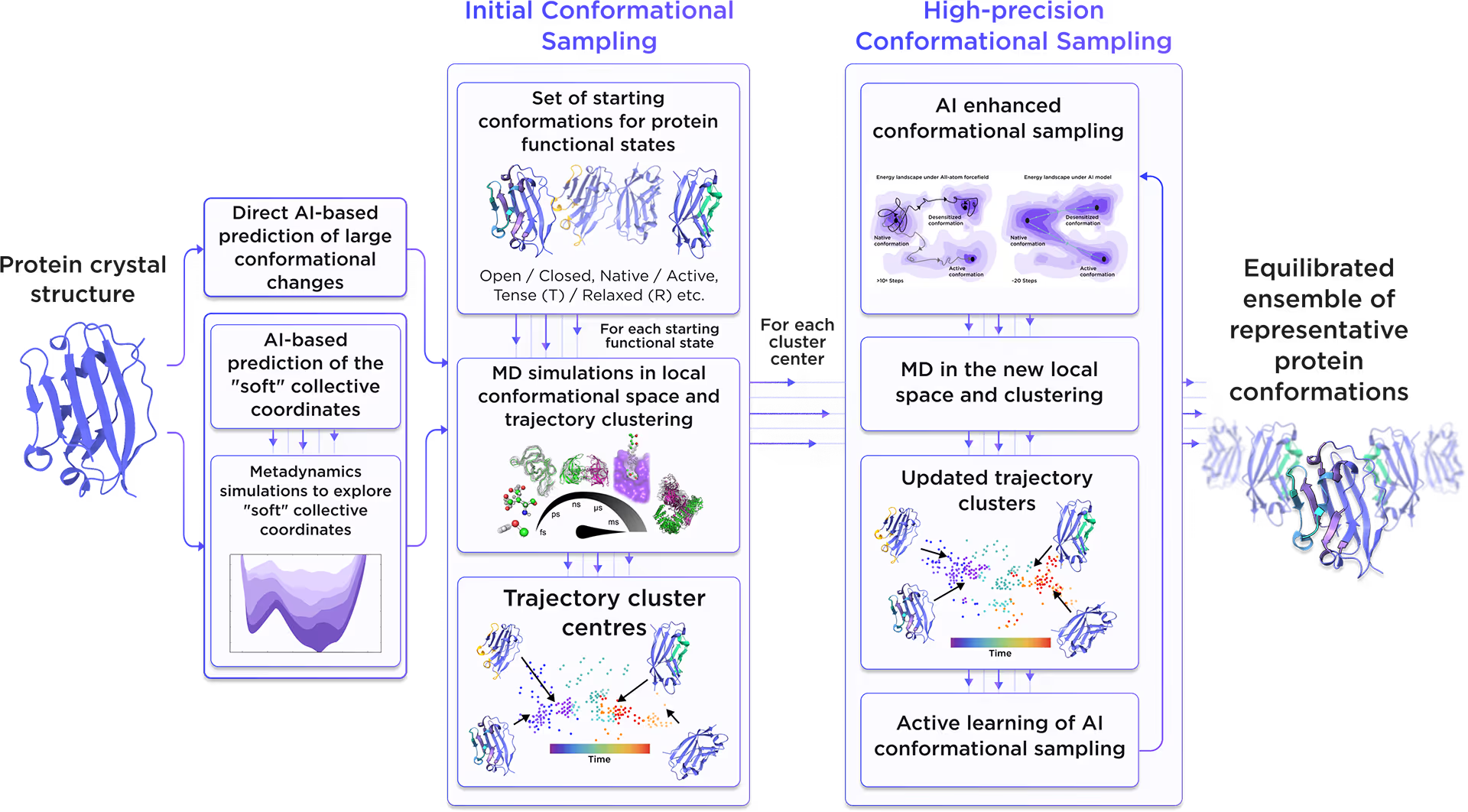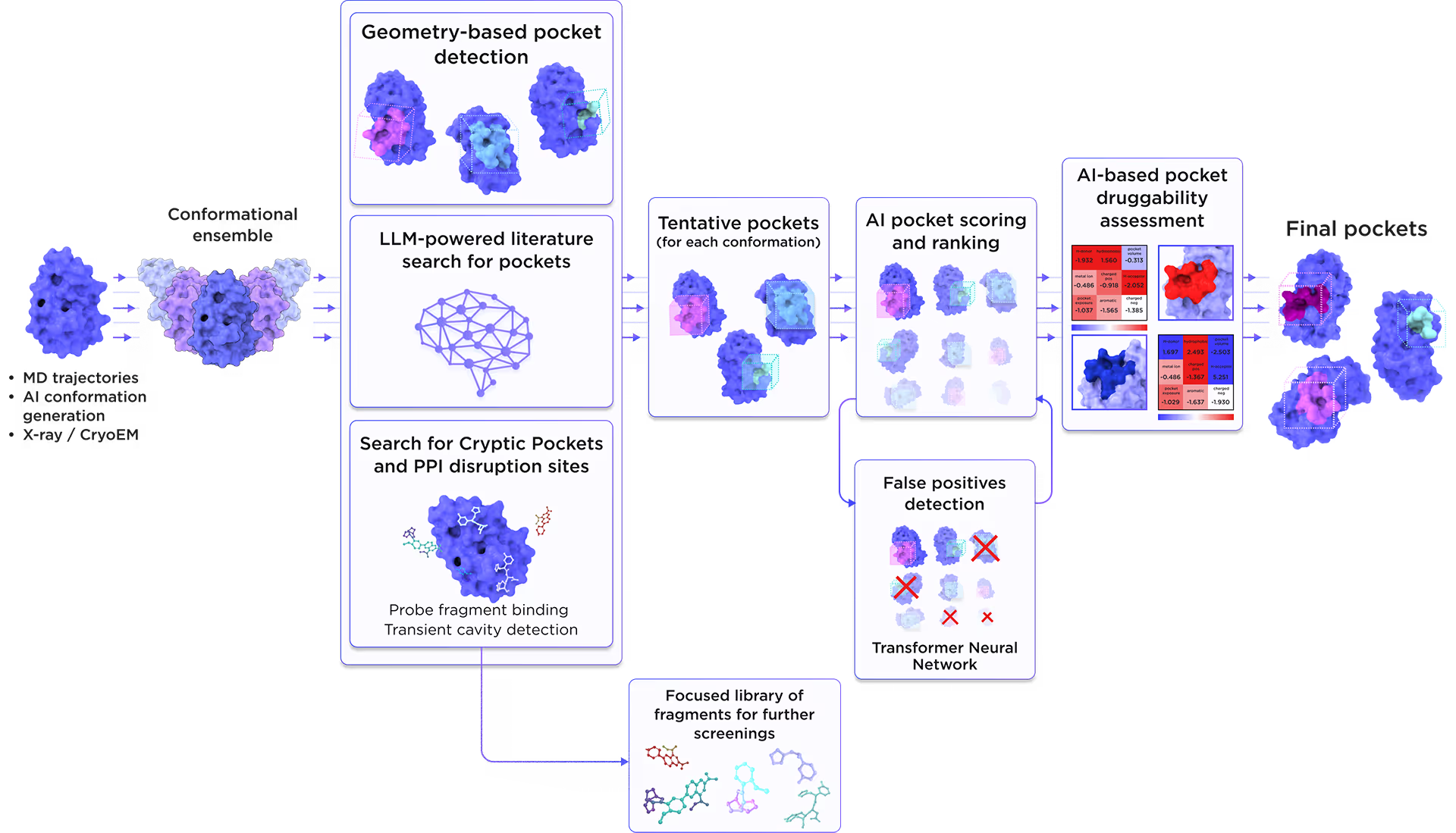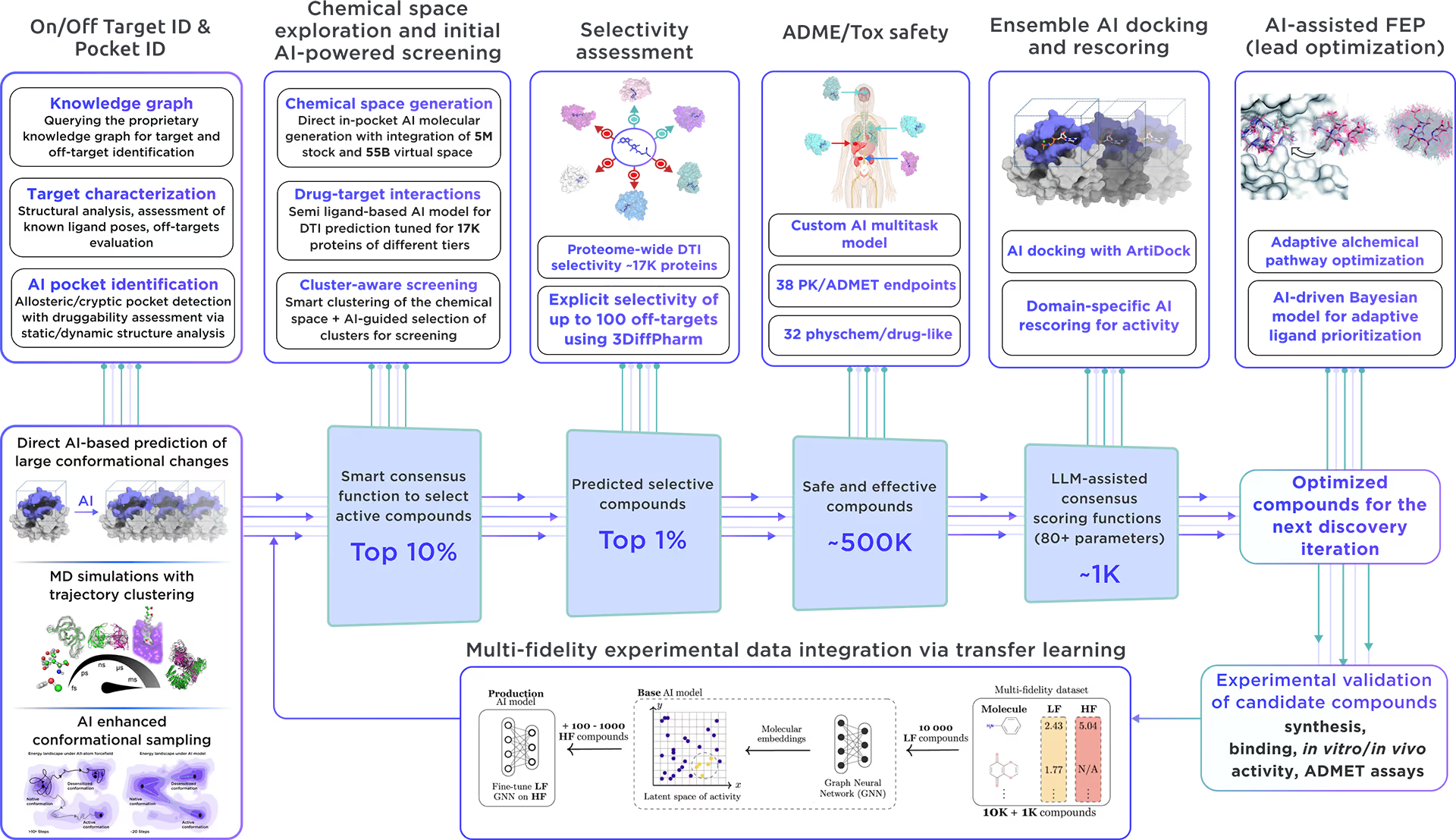

Available from Reaxense
This protein is integrated into the Receptor.AI ecosystem as a prospective target with high therapeutic potential. We performed a comprehensive characterization of Bone morphogenetic protein 6 including:
1. LLM-powered literature research
Our custom-tailored LLM extracted and formalized all relevant information about the protein from a large set of structured and unstructured data sources and stored it in the form of a Knowledge Graph. This comprehensive analysis allowed us to gain insight into Bone morphogenetic protein 6 therapeutic significance, existing small molecule ligands, relevant off-targets, and protein-protein interactions.

Fig. 1. Preliminary target research workflow
2. AI-Driven Conformational Ensemble Generation
Starting from the initial protein structure, we employed advanced AI algorithms to predict alternative functional states of Bone morphogenetic protein 6, including large-scale conformational changes along "soft" collective coordinates. Through molecular simulations with AI-enhanced sampling and trajectory clustering, we explored the broad conformational space of the protein and identified its representative structures. Utilizing diffusion-based AI models and active learning AutoML, we generated a statistically robust ensemble of equilibrium protein conformations that capture the receptor's full dynamic behavior, providing a robust foundation for accurate structure-based drug design.

Fig. 2. AI-powered molecular dynamics simulations workflow
3. Binding pockets identification and characterization
We employed the AI-based pocket prediction module to discover orthosteric, allosteric, hidden, and cryptic binding pockets on the protein’s surface. Our technique integrates the LLM-driven literature search and structure-aware ensemble-based pocket detection algorithm that utilizes previously established protein dynamics. Tentative pockets are then subject to AI scoring and ranking with simultaneous detection of false positives. In the final step, the AI model assesses the druggability of each pocket enabling a comprehensive selection of the most promising pockets for further targeting.

Fig. 3. AI-based binding pocket detection workflow
4. AI-Powered Virtual Screening
Our ecosystem is equipped to perform AI-driven virtual screening on Bone morphogenetic protein 6. With access to a vast chemical space and cutting-edge AI docking algorithms, we can rapidly and reliably predict the most promising, novel, diverse, potent, and safe small molecule ligands of Bone morphogenetic protein 6. This approach allows us to achieve an excellent hit rate and to identify compounds ready for advanced lead discovery and optimization.

Fig. 4. The screening workflow of Receptor.AI
Receptor.AI, in partnership with Reaxense, developed a next-generation technology for on-demand focused library design to enable extensive target exploration.
The focused library for Bone morphogenetic protein 6 includes a list of the most effective modulators, each annotated with 38 ADME-Tox and 32 physicochemical and drug-likeness parameters. Furthermore, each compound is shown with its optimal docking poses, affinity scores, and activity scores, offering a detailed summary.
Bone morphogenetic protein 6
partner:
Reaxense
upacc:
P22004
UPID:
BMP6_HUMAN
Alternative names:
VG-1-related protein
Alternative UPACC:
P22004; Q5TCP3
Background:
Bone morphogenetic protein 6 (BMP6), also known as VG-1-related protein, is a pivotal growth factor within the TGF-beta superfamily. It orchestrates critical roles in developmental processes, notably in cartilage and bone formation. BMP6 is instrumental in iron metabolism regulation, acting as a ligand for hemojuvelin/HJV to modulate HAMP/hepcidin expression. It triggers the canonical BMP signaling cascade through interaction with receptors ACVR1 and ACVR2B, and engages in non-canonical pathways like the TAZ-Hippo signaling to influence VEGF signaling.
Therapeutic significance:
BMP6's involvement in iron overload, a disorder of iron homeostasis, underscores its therapeutic potential. Understanding BMP6's regulatory role in iron metabolism and its impact on diseases like iron overload could pave the way for innovative treatment strategies, leveraging its signaling pathways to correct iron imbalances.